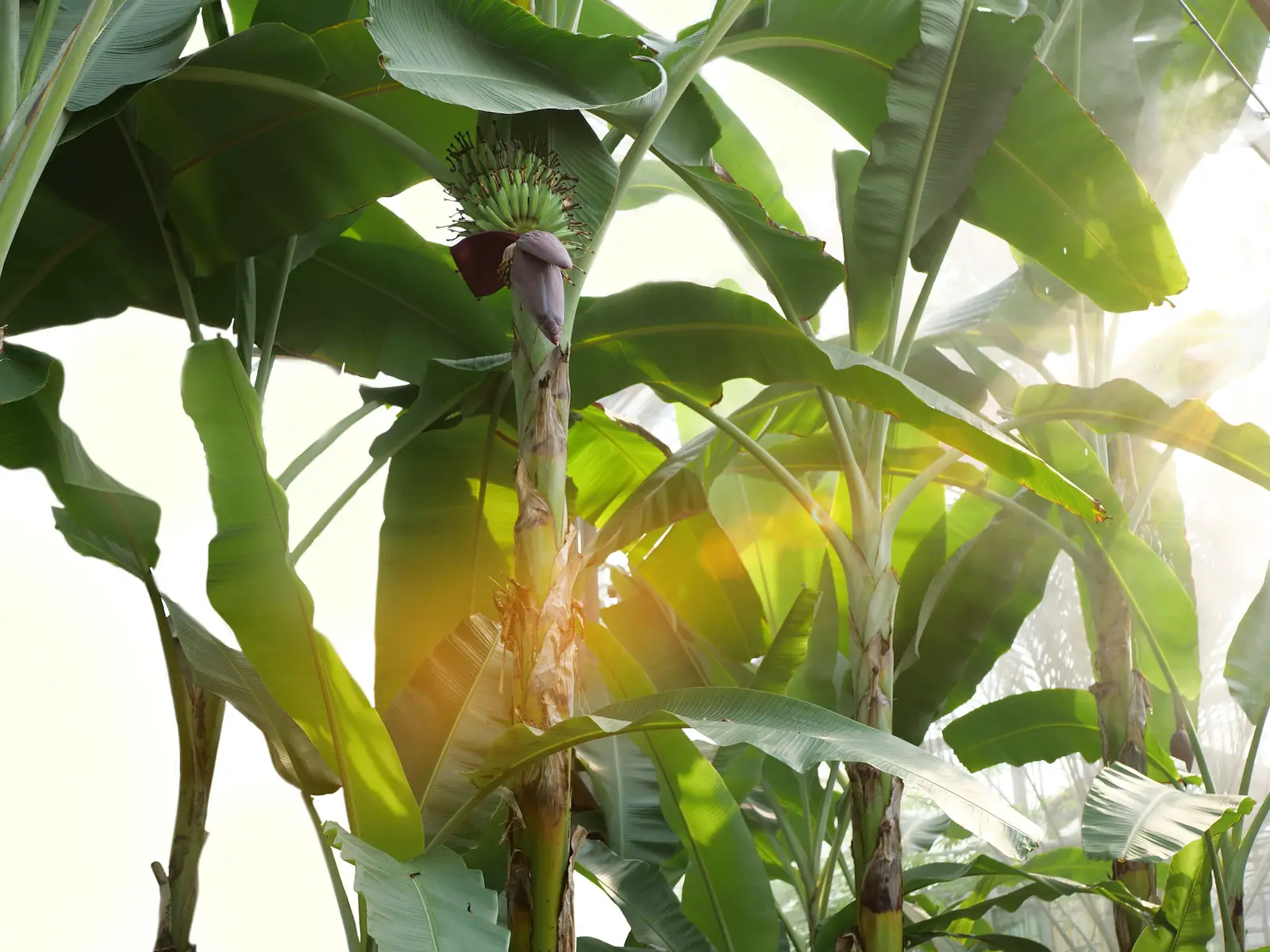Banana plants (genus Musa) are among the most recognizable and widely cultivated fruit plants in the world. With their broad leaves and distinctive shape, they add an exotic touch to any landscape. While commonly referred to as trees, banana plants are actually large herbaceous perennials, and the trunk is made of tightly packed leaf bases rather than wood.
The banana plant is known for its fruit, the banana, which is consumed globally and considered a staple in many tropical regions. It’s cultivated extensively not only for the fruit but also for its ornamental appeal. More than just a source of food, bananas have cultural and economic significance in many countries.
Though growing banana plants can be a rewarding endeavor, they require specific care and attention to thrive. From understanding the ideal soil and sunlight requirements to managing common pests and diseases, a banana plant’s successful cultivation depends on meeting its unique needs. Let’s explore the fascinating world of banana plants in more detail.
| Attribute | Details |
|---|---|
| Common Names | Banana Plant |
| Botanical Name | Genus Musa |
| Family | Musaceae |
| Plant Type | Herbaceous perennial |
| Mature Size | 10-20 feet tall |
| Sun Exposure | Full Sun |
| Soil Type | Rich, well-draining |
| Hardiness Zones | 9-11 |
| Native Area | Southeast Asia, Australia |
Banana Plant Care
Growing a banana plant requires some effort, but the lush growth and potential fruit harvest make it well worth it. Full sun, ample water, and well-draining soil rich in organic matter are essential for the best results. During the growing season, regular fertilization is also necessary to support the rapid growth of both foliage and fruit.
Banana plants grow quickly and can become quite large. Support may be needed to prevent the plant from toppling over, especially if it produces a heavy bunch of bananas. A thick layer of mulch around the base of the plant can help retain moisture and provide a steady supply of nutrients.
Light Requirement for Banana Plant
Banana plants need full sun to thrive. A minimum of 6-8 hours of direct sunlight each day will ensure robust growth. Lack of sufficient light can result in weak, leggy growth and may reduce fruit production.
Soil Requirements for Banana Plant
Rich, well-draining soil is essential for healthy banana plants. The soil should be loamy and enriched with organic matter, such as compost or well-rotted manure. A slightly acidic to neutral pH level (5.5 to 7.0) is ideal.
Water Requirements for Banana Plant
Banana plants require consistent and ample watering, especially during the growing season. The soil should be kept moist but not waterlogged. Drip irrigation or a soaker hose can help provide a steady supply of water without causing waterlogged soil.
Temperature and Humidity
Banana plants are tropical and thrive in warm temperatures, ideally between 60-80°F (15-27°C). They are not frost-tolerant and need protection in colder climates. High humidity levels are also beneficial and can be replicated in drier regions by misting the plant or placing a humidifier nearby.
Fertilizer
Regular fertilization with a balanced fertilizer (such as 10-10-10) is necessary during the growing season. Applying a slow-release fertilizer or regular applications of liquid fertilizer can support the rapid growth and fruit development of the banana plant.
Pruning Banana Plant
Pruning is essential to manage the size of the banana plant and encourage fruiting. Remove dead or yellowing leaves and spent fruit stems regularly. After the plant has fruited, cut back the main stem to allow new suckers to grow and produce fruit.
Propagating Banana Plant
Propagation of banana plants is typically done through division of the underground corm or rhizome. Separate a healthy sucker with roots from the parent plant and transplant it into suitable soil.
How To Grow Banana Plant From Seed
Growing banana plants from seed is possible but rare, as most cultivated bananas are seedless. If seeds are obtained, they should be soaked in warm water for a day before planting in well-draining soil. Germination can take several weeks.
Common Pests & Plant Diseases
Aphids
Aphids can be controlled using insecticidal soap or neem oil.
Panama Disease
A devastating disease that can be prevented through proper soil care and planting resistant varieties.
Banana Bunchy Top Virus
A serious virus transmitted by aphids; controlling aphid populations is essential for prevention.
Common Problems With Banana Plant
Yellowing Leaves
This may be a sign of nutrient deficiency, particularly a lack of potassium or magnesium.
Weak Growth
Insufficient light, water, or nutrients can lead to weak, leggy growth.
Pro Tips
- Provide strong support if growing bananas to prevent the plant from toppling over.
- Use well-draining soil rich in organic matter for optimal growth.
- Protect from strong winds, which can tear the large leaves.
- Monitor for signs of pests and diseases and take prompt action if detected.
- Choose a location with full sun for robust growth and fruiting.




